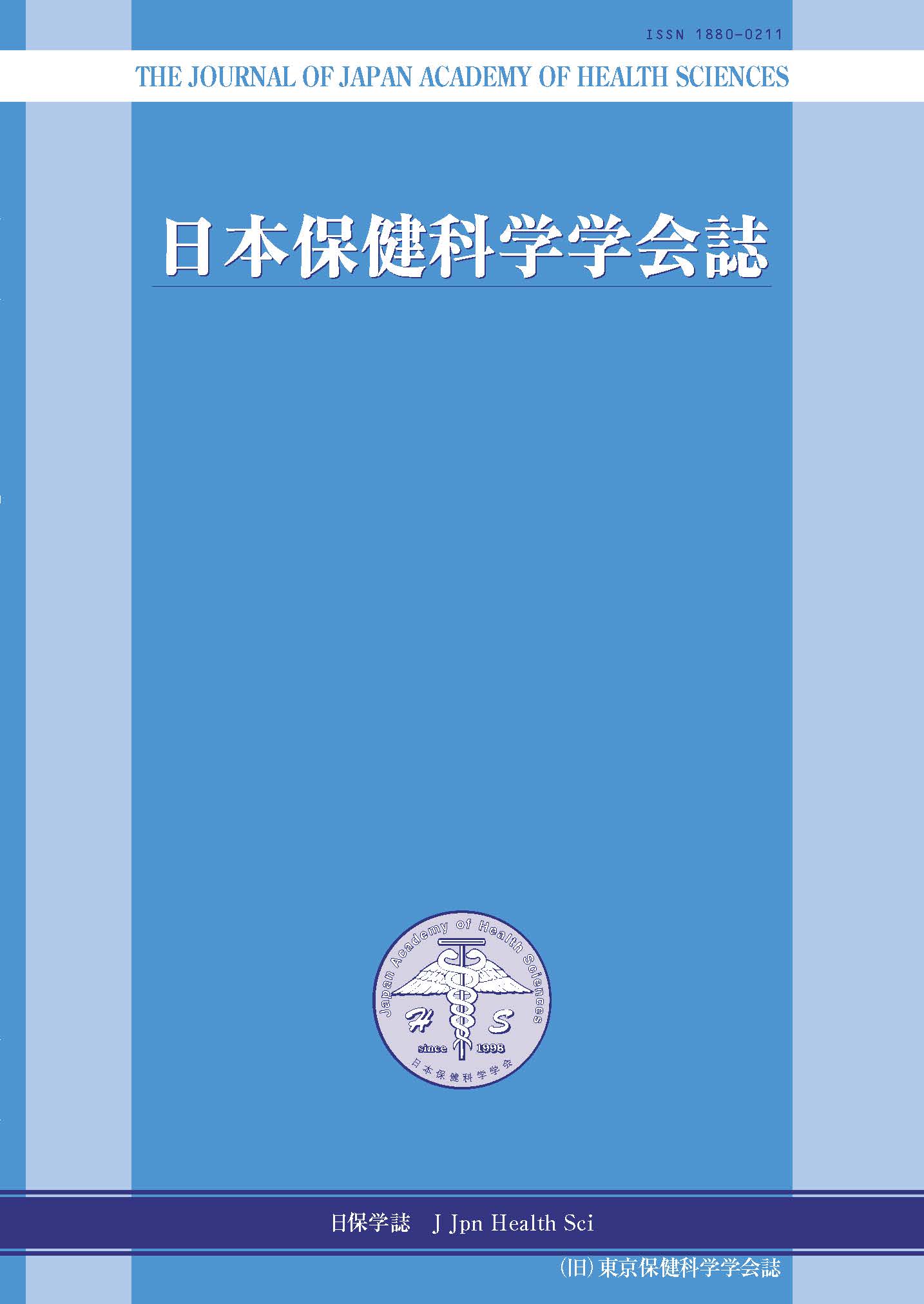All issues

Volume 25 (2022)
- Issue 2 Pages 50-
- Issue 1 Pages 2-
Predecessor
Current issue
Displaying 1-5 of 5 articles from this issue
- |<
- <
- 1
- >
- >|
-
2022 Volume 25 Issue 2 Pages 50-51
Published: 2022
Released on J-STAGE: March 14, 2024
JOURNAL FREE ACCESSDownload PDF (580K) -
Mitsuko Tsuda, Kumiko Adachi, Yuka Kataoka2022 Volume 25 Issue 2 Pages 53-64
Published: 2022
Released on J-STAGE: March 14, 2024
JOURNAL FREE ACCESSThe purpose of this study was to clarify the structure and function of the concept of cooperation as it applies to parenting in married couples and derive its operational definition. As a result of analyzing 53 target literatures using Walker and Avant’s conceptual analysis method, five attributes were extracted: “discuss parenting,” “instruct and control regarding parenting,” “express mutual gratitude and concern,” “recognize and support each other,” and “balance parenting with couples” Further, six prior requirements were extracted, including “the couple’s role recognition and expectations are in agreement” and the “parents have high parenti ng ability.” In addition, six consequences were also extracted, such as “strengt hening the connection between the couple” and “positive perception of parenting.”
As an operational definition of cooperation in couples’ parenting, we suggest “discuss parenting, sometimes giving instructions and expressing gratitude, supporting each other, parenting while balancing life as a couple.”View full abstractDownload PDF (3149K) -
Sachiyo Kubo, Kaori Iwatani, Tomoyo Ohno2022 Volume 25 Issue 2 Pages 65-78
Published: 2022
Released on J-STAGE: March 14, 2024
JOURNAL FREE ACCESSThis study aimed to clarify midwifery practice performed by midwives from an obstetric facility during postnatal home visits as well as issues related to such practice. The study conducted a semi-structured interview with eight midwives working in an obstetrics department who have the experience of carrying out a postnatal home visit.
It was found that during home visits, midwives have focused on interacting with the mother in a way that would help them “receive the mother’s feelings.” Midwives were providing support to the mother caring for her baby by “alleviating the mother's anxiety and concerns and approving her ways of caring for her baby.” Additionally, midwives were “making decisions and providing care that can be achieved through continuous interaction,” “providing care by using the strengths of a midwife,” and “making decisions and providing care in accordance with the mother’s living environment.” They were also “providing post-discharge support through interprofessional collaboration” when it was necessary. As “improvement of regional cooperation system and improvement of midwifery care for continuing home visits after childbirth”, it became clear that there is a need for multidisciplinary collaboration and cooperation, evaluation and review of postpartum home visits, improvement of the quality of midwifery care that takes advantage of the condition of the mother and child after discharge, and self-improvement of midwives for seamless support to mothers and children and their families after discharge.View full abstractDownload PDF (853K) -
Takumi Nakamura, Hironobu Kuruma2022 Volume 25 Issue 2 Pages 79-86
Published: 2022
Released on J-STAGE: March 14, 2024
JOURNAL FREE ACCESS[Objective]The purpose of this study was to review the article on factors related to early postoperative rehabilitation after spinal fusion surgery and to consider rehabilitation intervention methods.[Methods]It selected article to relate early postoperative rehabilitation after spinal fusion surgery by Pubmed. Articles that correspond the inclusion and exclusion criteria were categorized by assessment and intervention methods. [Results]Thirteen articles correspond the inclusion criteria. The articles were classified into three categories: changes of muscle strength, effects of rehabilitation, and predictors of recovery. The results of integrating the effects of rehabilitation showed that rehabilitation had little effect improving of ODI at three months after surgery.[Conclusions]This review helps us to consider early postoperative rehabilitation after spinal fusion surgery.View full abstractDownload PDF (825K) -
Yutaka Kumagai, Kazumi Kikuchi, Emiko Kikuchi2022 Volume 25 Issue 2 Pages 87-96
Published: 2022
Released on J-STAGE: March 14, 2024
JOURNAL FREE ACCESS【Background and Objectives】A comparative study was conducted in 2015 to determine the impact of occupational therapy(OT)education on generic skills(GS), which was a cross- sectional study of GS for 1st and 4th year university students. The purpose of this study is to explore the relationship between the factors of GS development and the occupational therapy education curriculum.
【Methods】In March 2019, the study was conducted with fourth-year students of a college in Tokyo ,the same consenting students who participated, as freshmen, in the 2015 survey. First, GS was measured using PROG test, provided by Kawaijuku and the Reasec company. Next, they were asked, in semi-structured interviews, about their subjective perceptions of the factors causing the change in GS values in relation to the OT curriculum, and a verbatim record was made.
The transcripts were broken down to the sentence level, and codes were extracted using the Thematic Analysis Method.
【Results】The literacy area of GS was shown to be improve in case study exercises, studying for the national examination, and practical training. The competency area was shown to be associated to group work, interaction with classmates, and the influence of practical training.
【Conclusion】The research suggests that the study for the national examination, case studies, group works, and practical training which was conducted in the OT education courses were influential factors in the development of GS scores.View full abstractDownload PDF (876K)
- |<
- <
- 1
- >
- >|